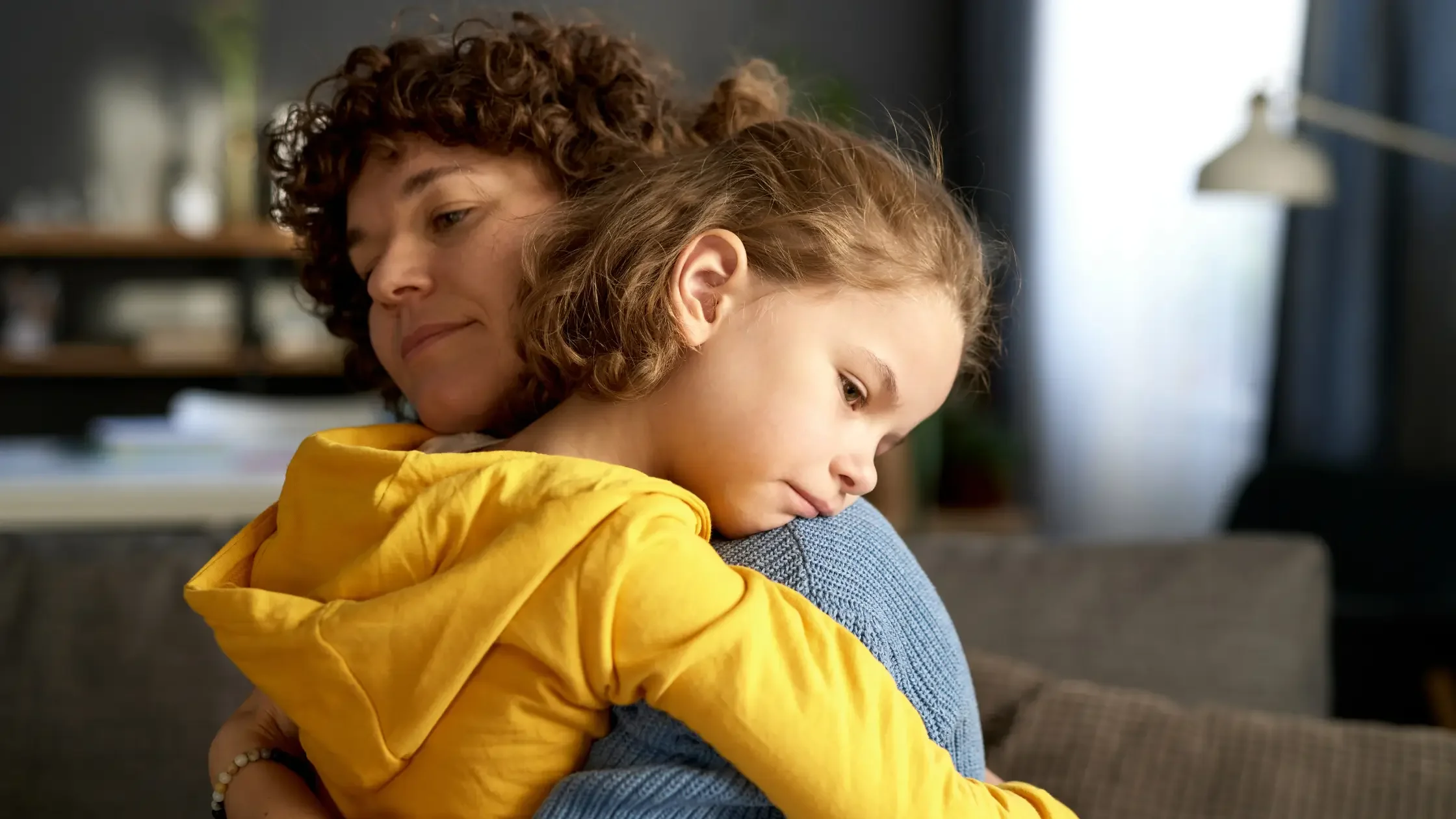How to Handle Your Toddler's Tantrums in Public: Calm, Connected Strategies for Parents
There’s nothing quite as heart-stopping as your toddler collapsing into a full-blown meltdown while you’re in the middle of grocery shopping. If in such moments, you find your heart beating really fast and you feel like disappearing with your toddler, let us reassure you that many parents have felt this way too! shocked and confused in the middle of a grocery store, wondering what to do next. As you’re learning and growing in your own journey of parenthood, your child is too, and these tantrums are just evidence of that. We will help you normalize these public scenes of wailing and flailing with the best strategies on how to manage them. With the right knowledge and a bit of planning, you can turn your toddler’s tantrums in public into opportunities for growth!
Your Toddler’s Tantrums in Public Are Appropriate
The prefrontal cortex in a human brain is responsible for impulse control and emotional regulation, which isn’t fully developed in a toddler. So, emotional regulation in public spaces may not be their strongest feat. While your little ones are still trying to learn their alphabet and words, they might not have the vocabulary to describe their emotions or recognize big feelings. You can read more about strategies to help your emotional toddler here. And as a result, what they feel comes out as uncontrollable laughter, or alternatively tears, or shrieks. Sometimes, your toddler’s tantrum in public is the only way for your young kiddo to say, ‘I feel something, but I don’t know what to do.’
So, instead of looking at your toddler’s tantrums in public as a problem, it’s time to look at them as a developmental milestone. They’re learning about new emotions, and that is great!
Why a Toddler’s Tantrums in Public Feel So Overwhelming
Even though we realize that a toddler’s tantrums in public are a normal part of growing up, why do they feel so overwhelming in public? It’s certainly because of the ‘spotlight’ effect. You feel exposed, like everyone’s watching you. According to research, people overestimate the extent to which their actions are noted by others. And then it leads to worrying: ‘What will people think of my child creating a fuss? What will they think of me as a parent?’
The moment you see your child erupt into a tantrum, your body releases adrenaline and cortisol, preparing it for the ‘fight or flight’ mode. This takes away the calm. You are no longer able to generate a calm and collected response that can help you diffuse the situation.
Parents also feel judged when experiencing their toddler’s tantrums in public. This invites shame in the form of self-critical phrases like, ‘I should've known better.’ When this happens, the focus shifts from your child and what they need to how to ‘save face.’ This entire scenario adds to stress and escalates the situation even before you know it.
What Triggers Toddler’s Tantrums in Public Places
Overstimulation
Toddlers have a highly sensitive sensory system that is still maturing. So when they experience an overload of bright fluorescent lights in a grocery aisle or multiple people talking in a shopping mall, they are very likely to get overstimulated.
Quick Transitions
The toddlers' senses also work a little differently from adults'. While it may be easy for you to go to the mall and then go grocery shopping, and then watch a movie, it may not be feasible for a toddler. They need time to adapt to a new environment. Sharp transitions without warnings take away their control and lead to agitation.
Basic Needs
Do you get cranky when you’re hungry? Then toddlers do too! After all, they’re just tiny human beings. Hunger is not something that a child can control, and so when they are hungry, they will do absolutely anything for you to notice that. Similarly, restroom breaks are also non-negotiable.
Communication Barrier
It is very likely that your toddler will not tell you that ‘it’s loud in the mall, which they find overwhelming, and so would like to go home.’ Instead, they might raise a limb or two and start crying.
Autonomy and Control
Your toddler may be tiny, but they will always want to do big things! Pushing the cart or choosing their own clothes can both become very important things for them. Straight up denying their urge to actively take part in activities can spark a meltdown.
Separation Anxiety
Between the ages of 6 months and 3 years, your child experiences separation anxiety. Unfamiliar places and losing sight of you, even for a moment, can really scare them for a moment. They also panic at the thought of losing you in a crowded place and so resort to a tantrum.
Physical Discomfort
Let’s be real, sometimes it's just too hot to be playing in the park. And while we are able to endure temperature extremes for some time, toddlers can not. Freezing cold aisles in the grocery store or strong smells at a perfume shop can all trigger discomfort in a toddler.
Toddler’s Tantrums in Public: What Not to Do
Before we get to learn how to handle your toddler's tantrums in public, we must first know what NOT to do! Firstly, never feel embarrassed because it's completely normal!
When your child is throwing a tantrum, don’t shame or embarrass them by using phrases like ‘Stop, you’re embarrassing me’ or ‘we’ll leave if you don’t calm down.’ Your toddler is sensitive. With such phrases, they may feel like you don't get them at all. And this makes your toddler’s tantrums in public even worse.
Strategies to Handle Your Toddler’s Tantrums in Public: What to Do
Look for the Calm
Before you take any action, take a deep breath. Try the box breathing method for calmness: Inhale slowly for a count of 4, hold your breath for 4, exhale gently for 4, pause for 4, then repeat. Here’s more on how to be a calmer parent.
Gentle Communication
Assure your toddler, be there for them. ‘I’m here for you’ or ‘Let’s take some deep breaths together’ can be very powerful things to say to them.
Co-regulate
Kneel to your child’s level while maintaining eye contact with them. Offer whatever support you can: a fidget toy, a hug if they’re open to it, or just humming a soothing tune.
Validate
Acknowledge all the big feelings that they feel but can’t fully express. ‘That must have been really tough’ or ‘I understand how it feels right now’ will let them know that their feelings are valid.
Restore Autonomy
Actively help your toddler in navigating their own emotions. It could be as simple as asking them, ‘Do you want a hug right now as we sit here or do you want to leave?’ By giving them a choice, you’re giving them a sense of control in a public space that they often lack.
Practical Tips to Help You Avoid Your Toddler’s Tantrums in Public
Your little toddler’s tantrums in public are largely unexpected; they will catch you by surprise!! But if we plan and strategize, we might be able to prevent them from happening. Here’s what you can do:
Snack packs
Prepare a small bag with treats and bite-sized snacks for toddlers who get hungry on the go! Keep it within the reach of your child, so they don’t get agitated looking for it.
Transition Warnings
When moving from one place to another, let your child know what to expect. Is it a mall with many shops and lights? In how many minutes are you expected to leave, and how much time will you spend there? This prepares them beforehand.
Engage
You might want to ask your child if they’re comfortable spending a day doing grocery shopping with you. Or if they’d want to meet a friend for a play date while you shop. Allowing them to choose what works for them may help you avoid your toddler’s tantrums in public!
Reconnecting After the Meltdown
How you approach your toddler after a meltdown is as important as how you approach them during it. Once the tantrum has passed, you need to have a ‘repair’ conversation with them. Ask them how they felt, what made them feel this way. Adopt an empathetic tone while you do so.
Reinforce the fact that they are still loved and cherished, so they feel safe in communicating their problems to you. Phrases like ‘I’m proud of how hard you tried’ or ‘I’m always here to listen to you’ can be ways of reconnecting with them
Managing Judgment from Bystanders
Self-talk
Tell yourself: ‘People aren’t noticing as much as I’ve made myself believe’ or ‘I’m doing my best!’ Because that really is the truth.
Engage with Bystanders
If you feel like it, you can politely communicate with the people around you by saying things like ‘Thanks for your patience, we’re working through big feelings.’
Humor
When you can, leverage humor to your advantage. Saying something like ‘This wasn’t on the itinerary!’ can help you quickly diffuse tension in a public space.
Body Language
Adopt an upright yet gentle and calm stance. This way, everyone knows that you’re in control of the situation. Closing off with arms crossed can signal shame, and we don’t want that.
Tantrum Triumphs: Celebrating Growth
It is about time that we look beyond the shame that is attached to a toddler’s tantrums in public and see them for what they really are: indicators of growth. If, as a parent, you’re able to navigate through them with a cool mind and resilience, then you’re doing the best you can. So, the next time you find your little one on the floor in some aisle of a grocery store, take it as an opportunity to co-regulate with them. Here’s to more confident and connected parenting!
Do you have a highly sensitive child?
We have created a course (Tuned In Parenting Course) that covers all from parenting techniques, to self-regulation, setting expectations, healthy boundaries and so much more. If you feel like starting with a sneak peak visit our Instagram page or check our mini courses: The Highly Sensitive Child and Parenting Essentials. We created these resources with care, and our hope is that they bring you clarity, support, and a sense of ease in your parenting journey.



